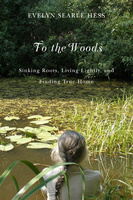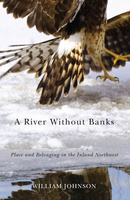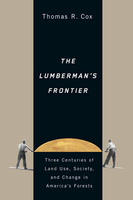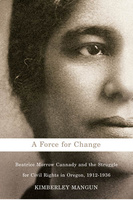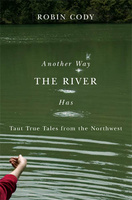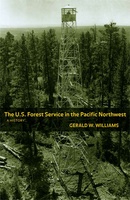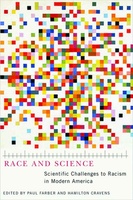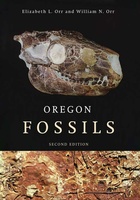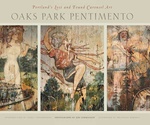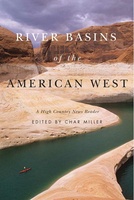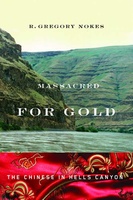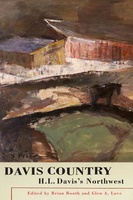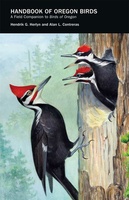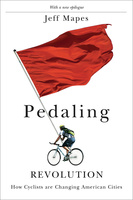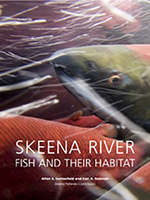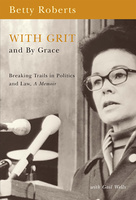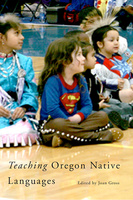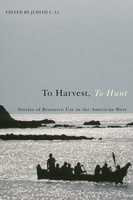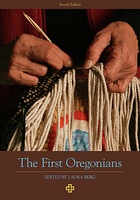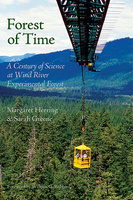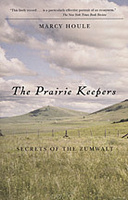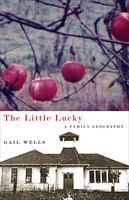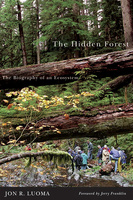Oregon State University Press
For fifty years, Oregon State University Press has been publishing exceptional books about the Pacific Northwest—its people and landscapes, its flora and fauna, its history and cultural heritage. The Press has played a vital role in the region’s literary life, providing readers with a better understanding of what it means to be an Oregonian. Today, Oregon State University Press publishes distinguished books in several academic areas from environmental history and natural resource management to indigenous studies.
To the Woods
Sinking Roots, Living Lightly, and Finding True Home
The true story of a couple who, in their late fifties, traded modern conveniences for life in a tent and trailer without electricity or indoor plumbing.
A River Without Banks
Place and Belonging in the Inland Northwest
The Lumberman's Frontier
Three Centuries of Land Use, Society, and Change in America's Forests
A Force for Change
Beatrice Morrow Cannady and the Struggle for Civil Rights in Oregon, 1912-1936
A Force for Change is the first full-length study of the life and work of one of Oregon’s most dynamic civil rights activists, African American journalist Beatrice Morrow Cannady. Between 1912 and 1936, Cannady tirelessly promoted interracial goodwill and fought segregation and discrimination.
She gave hundreds of lectures to high school and college students and shared her message with radio listeners across the Pacific Northwest. She was assistant editor, and later publisher, of The Advocate, Oregon’s largest African American newspaper. Cannady was the first black woman to graduate from law school in Oregon, and the first to run for state representative. She held interracial teas in her home in Northeast Portland and protested repeated showings of the racist film The Birth of a Nation. And when the Ku Klux Klan swept into Oregon, she urged the governor to act quickly to protect black Oregonians’ right to live and work without fear. Despite these accomplishments—and many more during her twenty-five-year career—Beatrice Cannady fell into obscurity when she left Oregon in about 1938.
A Force for Change illuminates Cannady’s important role in advocating for better race relations in Oregon in the early decades of the twentieth century. It describes her encounters with the period’s leading black artists, editors, politicians, and intellectuals, including W.E.B. Du Bois, Langston Hughes, A. Philip Randolph, Oscar De Priest, Roland Hayes, and James Weldon Johnson. It dispels the myth that African Americans played little part in Oregon’s history and enriches our understanding of the black experience in Oregon.
A Force for Change is an invaluable resource for students and scholars of women’s history, gender studies, African American history, journalism history, and Pacific Northwest history. It belongs on the shelf of any reader interested in a richer understanding of the civil rights movement in Oregon and across the country.
Another Way the River Has
Taut True Tales from the Northwest
Cody’s prose rings with a sense of place. He is a native speaker who probes the streams and woods and salmon that run to the heart of what it means to live and love, to work and play, in Oregon.
The U.S. Forest Service in the Pacific Northwest
A History
Race and Science
Scientific Challenges to Racism in Modern America
Oregon Fossils, Second Edition
River Basins of the American West
A High Country News Reader
Refusing War, Affirming Peace
The History of Civilian Public Service Camp #21 at Cascade Locks
Massacred for Gold
The Chinese in Hells Canyon
In 1887, more than 30 Chinese gold miners were massacred on the Oregon side of Hells Canyon, the deepest canyon in North America. Massacred for Gold, the first authoritative account of the unsolved crime—one of the worst of the many crimes committed by whites against Chinese laborers in the American West—unearths the evidence that points to an improbable gang of rustlers and schoolboys, one only 15, as the killers.
The crime was discovered weeks after it happened, but no charges were brought for nearly a year, when gang member Frank Vaughan, son of a well-known settler family, confessed and turned state’s evidence. Six men and boys, all from northeastern Oregon’s remote Wallowa country, were charged—but three fled, and the others were found innocent by a jury that a witness admitted had little interest in convicting anyone. A cover-up followed, and the crime was all but forgotten for the next 100 years, until a county clerk found hidden records in an unused safe.
In bringing this story out of the shadows, Nokes examines the once-substantial presence of Chinese laborers in the interior Pacific Northwest, describing why they came, how their efforts contributed to the region’s development, and how too often mistreatment and abuse were their only reward.
Davis Country
H.L. Davis's Northwest
Handbook of Oregon Birds
A Field Companion to Birds of Oregon
Living with Bugs
Least-Toxic Solutions to Everyday Bug Problems
The Environmental Justice
William O. Douglass and American Conservation
Water in the 21st-Century West
A High Country News Reader
Pedaling Revolution
How Cyclists Are Changing American Cities
Updated Edition includes a new epilogue by the author
In a world of increasing traffic congestion, a grassroots movement is carving out a niche for bicycles on city streets. Pedaling Revolution explores the growing bike culture that is changing the look and feel of cities, suburbs, and small towns across North America.
From traffic-dodging bike messengers to tattooed teenagers on battered bikes, from riders in spandex to well-dressed executives, ordinary citizens are becoming transportation revolutionaries. Jeff Mapes traces the growth of bicycle advocacy and explores the environmental, safety, and health aspects of bicycling. He rides with bicycle advocates who are taming the streets of New York City, joins the street circus that is Critical Mass in San Francisco, and gets inspired by the every-day folk pedaling in Amsterdam, the nirvana of American bike activists. Chapters focused on big cities, college towns, and America’s most successful bike city, Portland, show how cyclists, with the encouragement of local officials, are claiming a share of the valuable streetscape.
“A growing number of Americans, mounted on their bicycles like some new kind of urban cowboy, are mixing it up with swift, two-ton motor vehicles as they create a new society on the streets. They’re finding physical fitness, low-cost transportation, environmental purity—and, still all too often, Wild West risks of sudden death or injury.” —from the introduction
Beauty of the City
A.E. Doyle, Portland's Architect
Wild Beauty
Photography of the Columbia River Gorge, 1860-1960
Catching the Ebb
Drift-Fishing for Life in Cook Inlet
Stubborn Twig
Three Generations in the Life of a Japanese American Family
With Grit and By Grace
Breaking Trails in Politics and Law, Memior
Oregon Coastal Access Guide, Second Edition
A Mile by Mile Guide to Scenic and Recreational Attractions
Linus Pauling
Scientist and Peacemaker
Teaching Oregon Native Langauges
In a world where over half of the remaining six thousand languages will most likely disappear by the end of the century, attention has finally begun to focus on the struggles of indigenous people to save their languages. Lack of knowledge concerning the vast linguistic diversity of Oregon's languages has been a major obstacle to language ...
To Harvest, To Hunt
Stories of Resource Use in the American West
To Harvest, To Hunt is a rich collection of writings that reveals how diverse peoples have valued and used natural resources throughout the history of the American West. Drawing on family letters, oral traditions, historical records, and personal experience, the book's contributors offer readers new perspectives on the land they live on, ...
The First Oregonians, Second Edition
Originally published in 1991, The First Oregonians has been revised and expanded for a new generation of Oregonians. It provides a comprehensive view of Oregon's native peoples from the past to the present.
In this remarkable volume, Oregon Indians tell their own stories—more than half of the chapters are written by members of Oregon's nine federally recognized tribes. Using oral histories and personal recollections, these chapters vividly depict not only a history of decimation and decline, but also a contemporary view of cultural revitalization, renewal, and continuity. The First Oregonians also includes essays by prominent Northwest scholars exploring geography, federal-Indian relations, language, and art.
No other book offers as wide a variety of views and stories about the historical and contemporary experience of Oregon Indians. The First Oregonians is the definitive volume for anyone interested in the fascinating story of Oregon’s first peoples.
Contributors: C. Melvin Aikens, Stephen Dow Beckham, Marilyn Couture, Douglas Deur, Yvonne Hajda, Eugene Hunn, Dell Hymes, Jennifer Karson, Robert Kentta, Bill Mercer, Brent Merrill, Wil Phinney, Michael Rondeau, Howard P. Roy, Minerva T. Soucie, Kathryn Anne Toepel, George B. Wasson, Jr., and Elizabeth Woody.
About the Publisher
Oregon Council for the Humanities is an independent, nonprofit affiliate of the National Endowment for the Humanities that offers Oregonians the opportunity to reflect upon and discuss the critical issues and ideas of our time.
Forest of Time
A Century of Science at Wind River Experimental Forest
The Wind River Experimental Forest has been called the cradle of forestry in the Pacific Northwest. Located in the Gifford Pinchot National Forest in southwest Washington, the forest is a nexus of groundbreaking discoveries in forest genetics and ecology, and is one of more than seventyfive Forest Service landscapes across the U.S. devoted ...
Prairie Keepers, The, 2nd ed
Secrets of the Zumwalt
In the remote northeast corner of Oregon lies the ruggedly beautiful Zumwalt Prairie. A wild expanse of untilled ground covering nearly two hundred square miles, the Zumwalt is almost entirely managed by cattle ranchers. It also is home to one of the highest concentrations of hawks in North America, including red tailed, ferruginous, and ...
Little Lucky, The
A Family Geography
"When you live in an old house, the remodeling and rehabilitatingnever end. I guess the same is true when you belong to a family."A ruined old schoolhouse and a loving, troubled family are at theheart of The Little Lucky, a reflec tion of the many ways in which aplace can shape and be shaped by family. In discerning and nimbleprose, Gail ...
Oregon Water Handbook, The
A Guide to Water and Water Management
Majority of Scoundrels, A
An Informal History of the Rocky Mountain Fur Company
With the skill of a historian, Don Berry set his celebrated trilogy of novels—Trask, Moontrap, and To Build a Ship—in pioneer-era Oregon. In A Majority of Scoundrels, he brings the craft of a novelist to his captivating history of the American fur trade.
Hidden Forest, The
The Biography of an Ecosystem
The tallest species of spruce, hemlock, fir, cedar, and pine trees on earth coexist in the old growth of the H. J. Andrews Experimental Forest in Oregon’s Cascade Range. Set aside as a living laboratory by the U.S. Forest Service in 1948, the 16,000 acres represent a vital scientific endeavor: the long-term study of a single contained ecosystem. Here, for the first time, researchers from an enormous range of disciplines—forest scientists, botanists, entomologists, wildlife ecologists, soil biologists, and others—have assembled to examine the role of every working element in the life of a forest.
In The Hidden Forest, veteran science writer Jon Luoma offers an absorbing account of how these scientists came to recognize the importance of natural forest ecosystems and how their research is revolutionizing forest management.
Luoma takes readers into the hidden forest where researchers have discovered a host of species previously unknown to science, and interactions in the forest ecosystem that no one previously imagined. He describes projects dealing with the forest canopy, rotting logs, insects, fungi, wildlife, streams, and the effects of flood, fire, clear cutting, and volcanic eruption. And he tells the human story behind the research, capturing the shared excitement and wonder of scientific discovery. Along the way, Luoma provides a short course in such complex issues as forest succession, biodiversity, and the politics of forestry.
In a new foreword, Jerry Franklin discusses the importance of dedicated, long-term research sites and comments on new discoveries that have emerged from forest ecosystem research since The Hidden Forest was first published.

